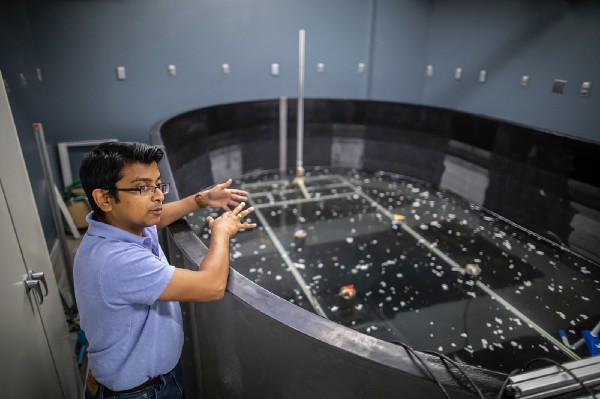In Penn’s Scalable Autonomous Robots Lab, three researchers watch from a cluster of computer monitors as small black boats navigate through water in a large indoor pool, seemingly battling against artificially produced currents. But the toy-sized, robotic ships aren’t fighting the currents; they’re actually using them to move around.
They’re part of an autonomous fleet being used by M. Ani Hsieh and a team in her lab. Their goal is to enable robots to perform useful tasks across the ocean, fueled by the power of the water’s currents, with the ability to stay in the ocean beyond the lengths of time any crewed vehicle could without extensive equipment and fuel.

Hsieh, a research associate professor in the Department of Mechanical Engineering and Applied Mechanics in the School of Engineering and Applied Science, along with postdoctoral researchers Dhanushka Kularatne and Xi Yu, designs algorithms that will allow these robots to map ocean currents. Doing so could help scientists predict climate changes to stay ahead of dangerous weather events, map the potential trajectory of a chemical or oil spill, or even track the debris of a downed aircraft for a search-and-rescue team. By better understanding the current patterns, the robots will also be able to use the currents as a natural energy source to travel farther and longer — and potentially do more.
Continue reading Jacob Williamson-Rea’s story at Penn Today.
